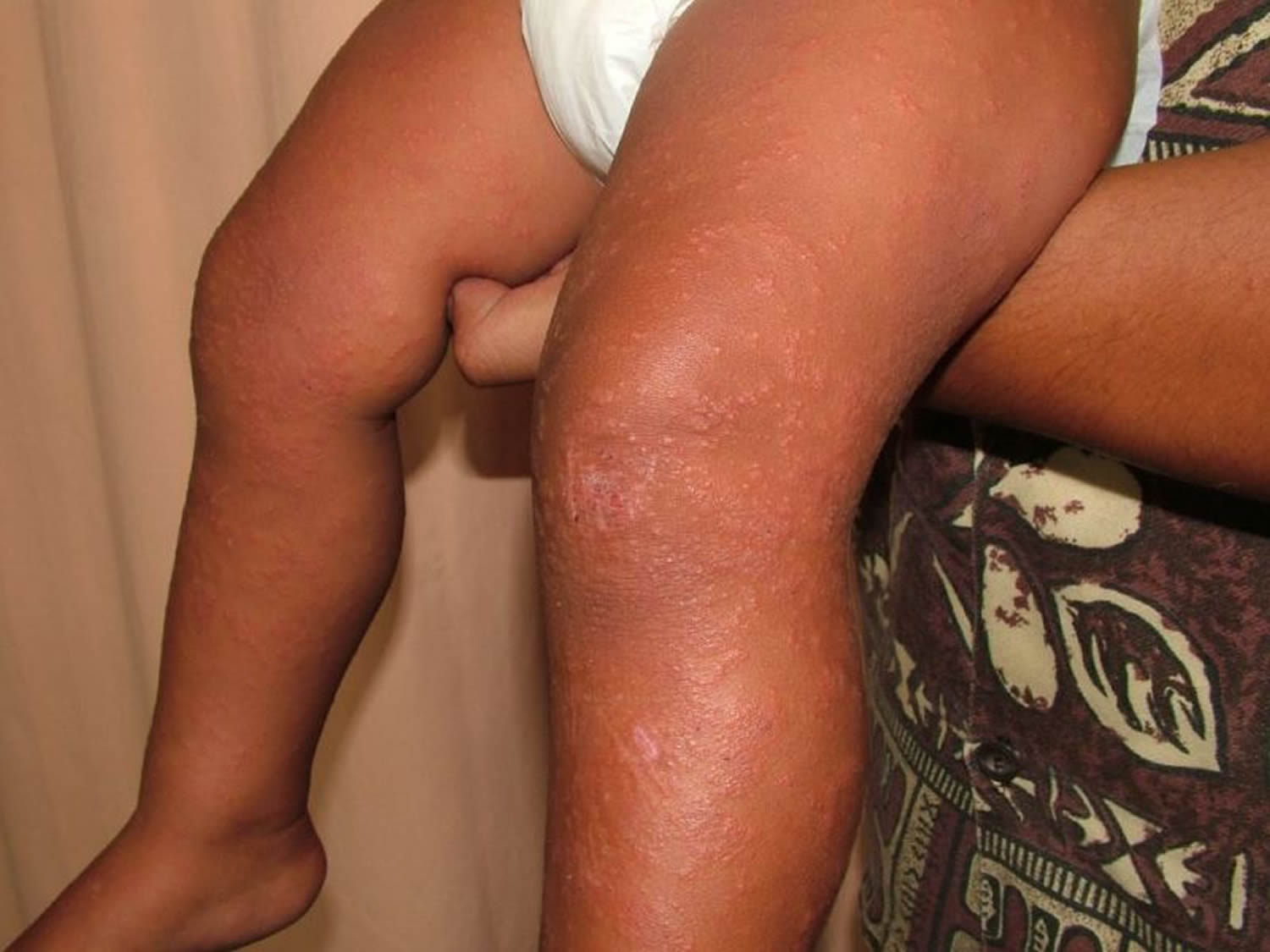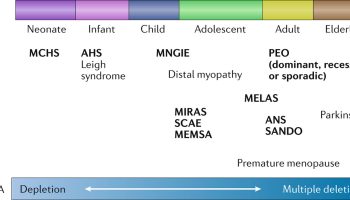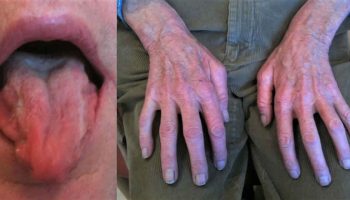What is Gianotti Crosti syndrome
Gianotti Crosti syndrome also known as papular acrodermatitis of childhood, is a rare childhood skin condition characterized by a papular rash with blisters on the skin of the legs, buttocks, and arms, that may be accompanied by mild symptoms of fever and malaise. Gianotti Crosti syndrome may also be associated with hepatitis B and other viral infections. Other names sometimes used for Gianotti-Crosti syndrome include infantile papular acrodermatitis, and acrodermatitis papulosa infantum 1. Gianotti Crosti syndrome typically affects children between 9 months and 9 years of age. Skin lesions typically last at least 10 days and often last for several weeks. The lesions are usually preceded by an underlying infection (usually a virus), which may cause associated symptoms such as low-grade fever, sore throat, or symptoms of an upper respiratory infection. When Gianotti Crosti syndrome is associated with hepatitis B, Epstein-Barr, or cytomegalovirus (CMV) infection, acute hepatitis may also occur. Gianotti Crosti syndrome is thought to be a hypersensitive response to the underlying infection. While in many countries the underlying cause is hepatitis B, this is rarely the cause in North America. Gianotti Crosti syndrome typically does not require treatment and goes away on its own within 1 to 3 months 2. In some cases, a mild topical steroid cream may be prescribed to relieve itching 1.
Gianotti Crosti syndrome causes
Health care providers don’t know the exact cause of Gianotti Crosti syndrome. They do know that it is linked with other infections.
The rash is a reaction to a systemic viral infection. The specific viruses causing Gianotti Crosti syndrome may include:
- Hepatitis B infection
- Epstein Barr virus (the cause of glandular fever)
- Cytomegalovirus
- Enterovirus infections
- Echoviruses
- Coxsackie viruses
- Parainfluenza virus
- Respiratory syncytial virus (RSV).
In Italian children, Gianotti-Crosti syndrome is seen frequently with hepatitis B. But this link is rarely seen in the United States. Epstein-Barr virus (EBV, mononucleosis) is the virus most often associated with acrodermatitis.
Some types of live virus vaccines have also occasionally been associated with the onset of Gianotti-Crosti syndrome.
Gianotti-Crosti syndrome pathophysiology
The most likely explanation for the Gianotti-Crosti syndrome rash (papular acrodermatitis) is a local type IV hypersensitivity reaction to the offending viral or bacterial antigen within the dermis. This is based on the immunohistochemical characterization of the cutaneous inflammatory infiltrate. Findings on direct immunofluorescence examination of the skin are always negative. Electron microscopy has never revealed virus particles that suggested a reactive process other than an autoimmune phenomenon or direct infection of the skin. Inciting factors include various viral and bacterial infections, as well as recent immunizations. The rarity of Gianotti-Crosti syndrome in adults suggests lifelong immunity to a common viral triggering agent. Gianotti-Crosti syndrome is more common among children with atopic dermatitis, suggesting an immune mechanism. Increased human beta-defensin-4 (hBD-4) activity in the epidermis has been reported, indicating viral antigenemia rather than a type IV hypersensitivity reaction, as a possible cause of Gianotti-Crosti syndrome in some viral cases 3. However, more information is needed in order to define the precise mechanism involved. No genetic or familial predisposition is apparent 4. An association with oral polio vaccination has been reported 5.
Gianotti Crosti syndrome signs and symptoms
Gianotti-Crosti syndrome skin symptoms may include any of the following:
- Rash or patch on skin
- Brownish-red or copper-colored patch that is firm and flat on top
- String of bumps may appear in a line
- Generally not itchy
- Rash looks the same on both sides of the body
- Rash may appear on the palms and soles, but not on the back, chest, or belly area (this is one of the ways it is identified, by the absence of the rash from the trunk of the body)
Other symptoms that may appear include:
- Swollen abdomen
- Swollen lymph nodes
- Tender lymph nodes
Gianotti Crosti syndrome (papular acrodermatitis of childhood) presents over the course of 3 or 4 days. A profuse eruption of dull red spots develops first on the thighs and buttocks, then on the outer aspects of the arms, and finally on the face. The rash is often asymmetrical.
The individual spots are 5–10 mm in diameter and are a deep red color. Later they often look purple, especially on the legs, due to leakage of blood from the capillaries. They may develop fluid-filled blisters (vesicles).
Gianotti Crosti syndrome is not usually itchy.
The child with papular acrodermatitis may feel quite well or have a mild temperature. Mildly enlarged lymph nodes in the armpits and groins may persist for months. When papular acrodermatitis is caused by hepatitis B, there may be an enlarged liver, but there is seldom any jaundice.
Gianotti Crosti syndrome diagnosis
Your doctor can diagnose this condition by looking at the skin and rash. The clinical appearance of Gianotti Crosti syndrome is quite characteristic, and many children do not require any specific tests. The liver, spleen, and lymph nodes may be swollen.
However, following tests may be done to confirm the diagnosis or rule out other conditions:
- Blood count
- Liver enzymes (liver function tests)
- Viral serology or PCR.
- Bilirubin level
- Hepatitis virus serology or hepatitis B surface antigen
- Screening for EBV antibodies
- Skin biopsy
Gianotti Crosti syndrome treatment
Gianotti Crosti syndrome itself is not treated. Infections linked with Gianotti Crosti syndrome, such as hepatitis B and Epstein-Barr, are treated. A mild topical steroid cream or emollient and oral antihistamines may help with itching and irritation.
Gianotti Crosti syndrome prognosis
Gianotti Crosti syndrome prognosis is excellent. Gianotti Crosti syndrome rash usually disappears on its own in about 2 to 12 weeks weeks with mild scaling without treatment or complication. Associated conditions must be watched carefully.
Recurrence of papular acrodermatitis is unlikely but has been reported.
If hepatitis B is present, the liver takes between 6 months and 4 years to fully recover. Sometimes there is persistent hepatitis and persistent viral infection.
- Papular acrodermatitis of childhood. https://www.dermnetnz.org/topics/papular-acrodermatitis-of-childhood[↩][↩]
- Gianotti-Crosti Syndrome. https://emedicine.medscape.com/article/911275-overview[↩]
- Caltabiano R, Vecchio GM, De Pasquale R, Loreto C, Leonardi R, Vasquez E. Human ß-defensin 4 expression in Gianotti-Crosti. Acta Dermatovenerol Croat. 2013. 21(1):43-7.[↩]
- Tagawa C, Speakman M. Photo quiz. Papular rash in a child after a fever. Gianotti-Crosti syndrome. Am Fam Physician. January 2013. 87(1):59-60.[↩]
- Al Dhaheri HS, Al Kaabi A, Kara Hamo Y, Al Kaabi A, Al Kaabi S, Al Tatari H. Unusual Presentation of Gianotti-Crosti Syndrome due to Epstein-Barr Virus Infection. Case Rep Dermatol Med. 2016. 2016:1017524.[↩]





